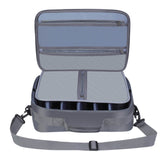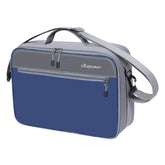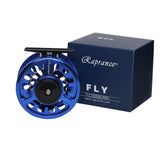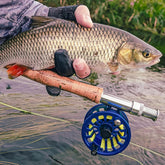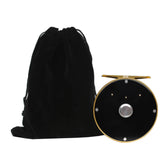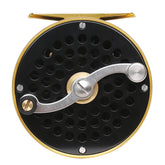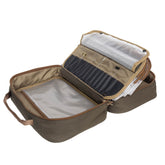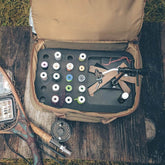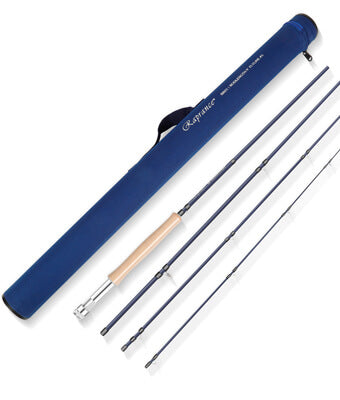Fly Line: Essential Guide to Scandi Line Selection and Setup
When it comes to fly fishing, especially with two-handed rods, selecting the right Scandi line is crucial for achieving effective casts. Choosing the correct grain weight allows for better control and presentation, ensuring my flies reach the desired depth and drift naturally. Understanding how various line weights affect my casting style makes a significant difference in my fishing success.

I’ve explored numerous running lines to enhance my Scandi setups, and I can confidently say that some options provide superior performance and versatility. Finding the best running line not only affects my casting distance but also my ability to make smooth, controlled presentations on the water.
Additionally, pairing a Scandi line with the right two-handed rod amplifies my overall fly-fishing experience. It’s essential to match these components to optimize performance, especially when exploring budget-friendly Scandi fly lines without sacrificing quality. Knowing what to look for can help ensure that I get the most value on the water while enjoying my time casting.
Understanding Scandi Lines
Scandi lines are a popular choice for two-handed rod setups, particularly in spey casting. In this section, I’ll focus on the key aspects of grain weight selection and the characteristics that define Scandi lines.
Choosing the Right Grain Weight for a Scandi Line
Selecting the appropriate grain weight for a Scandi line is crucial for effective casting. Each Scandi head typically falls within a specific grain window, which is the range of weights compatible with different rod actions. This range allows for optimal turnover and casting efficiency.
When I choose a line, I consider the following:
- Rod Specifications: Check the manufacturer’s recommendations for line weight.
- Casting Style: Heavier lines may suit more aggressive casting techniques, while lighter lines aid in finesse presentations.
- Water Conditions: In fast water, a slightly heavier line can help maintain control.
Finding the right balance ensures that my Scandi setup performs efficiently and enhances my overall fishing experience.
Characteristics of Scandi Lines
Scandi lines are known for their unique taper and versatility in various conditions. They typically feature a short head length, allowing for quick and effective casting, especially in tight spaces.
Key characteristics include:
- Taper Design: Scandi heads are often shorter and have a gentle taper, which provides smooth turnover, particularly useful with tapered leaders and polyleaders.
- Casting Distance: The design allows for efficient load and quick release, making it easier to cast long distances without excessive effort.
- Multi-Functionality: Scandi lines work well with various sink tips and polyleaders, offering adaptability for different fishing scenarios.
Understanding these characteristics helps me make informed choices when setting up for a successful fishing trip.
Optimizing Scandi Setups
Creating an effective Scandi setup requires attention to both the running line and the proper match to two-handed rods. Selecting the right components enhances line control and maximizes casting distance.
Best Running Lines for Scandi Setups
Choosing the right running line is crucial for a successful Scandi setup. I prefer mono running lines for their low stretch and high sensitivity, allowing quick feedback when a fish takes the fly. Alternatively, integrated running lines offer the convenience of a seamless connection to the Scandi head, simplifying rigging.
Key Features to Consider:
- Diameter: Thinner lines reduce drag but may sacrifice durability.
- Material: PVC and gel-spun options differ in flexibility and floatation.
- Weight: The running line should complement the Scandi head's grain weight for optimal performance.
Find a balance between weight and diameter to enhance casting efficiency.
Matching a Scandi Line to a Two-Handed Rod
Pairing a Scandi line with the correct two-handed rod directly impacts casting effectiveness. I ensure the line weight matches the rod's grain window. This ensures smooth casting and proper load.
Important Considerations:
- Rod Length: Longer rods generally require heavier lines for effective loading.
- Casting Style: My preferred casting technique influences my choice of line. For example, if I favor dynamic casts, a heavier head often performs better.
Testing a few combinations can reveal what works best with both my rod and my style, enhancing performance on the water.
Advanced Techniques and Gear

In this section, I will explore advanced casting techniques and appropriate gear for utilizing Scandi lines. Understanding these elements can enhance your overall fly fishing experience, especially when targeting specific species with precision.
Spey Casting Styles and Scandi Lines
When casting with a Scandi line, I find particular success using various Spey casting styles. My preferred techniques include the Single Spey and the Snake Roll. Each style offers unique advantages depending on the fishing environment.
The Single Spey is efficient for casting directly downstream or across the current. It allows for quick and accurate presentations while minimizing line splash. In contrast, the Snake Roll excels in challenging wind conditions and when I need to load the rod deeply while keeping the fly in the water.
Pairing these casting styles with an appropriate Scandi line can significantly improve my casting distance and accuracy. A line with the right grain weight will match my Spey rod, enabling optimal performance in various water conditions.
Budget Considerations and Recommendations

Finding quality Scandi fly lines on a budget is crucial for many anglers. I focused on options that deliver performance without straining finances.
Best Budget Scandi Fly Lines
-
Rio Scandi: Known for its smooth casting and versatility, the Rio Scandi line offers a great balance. Priced reasonably, it provides excellent performance for those new to two-handed rods.
-
Airflo Skagit Compact: While primarily a Skagit line, the Airflo Skagit Compact is adaptable for Scandi-style fishing. Its durability and ease of use make it a valuable budget option.
-
Cortland 444: This line is an economical choice that doesn't compromise on quality. Its tapered design aids in casting precision and is suitable for a variety of conditions.
-
Scientific Anglers Scandi: Another solid choice, the Scientific Anglers Scandi lines are designed for affordability and performance. They excel in a variety of water environments, making them reliable for different fishing scenarios.
Each of these lines reflects a careful balance of cost and capability, ensuring that budget-conscious anglers can still field quality gear.

